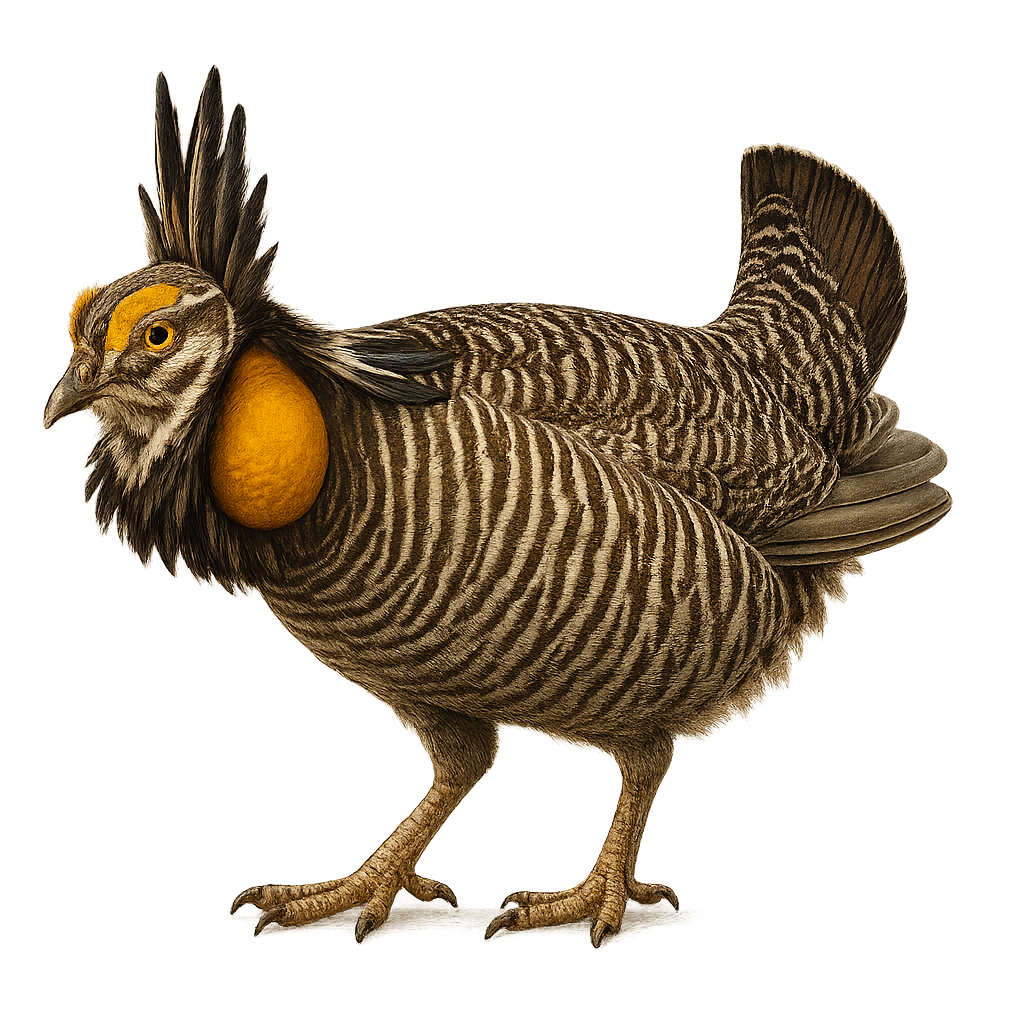Your wildlife photography guide.
Explore the greater prairie-chicken in detail, study its behavior, prepare your shots.
Where to observe and photograph the greater prairie-chicken in the wild
Learn where and when to spot the greater prairie-chicken in the wild, how to identify the species based on distinctive features, and what natural environments it inhabits. The WildlifePhotographer app offers tailored photography tips that reflect the greater prairie-chicken’s behavior, helping you capture better wildlife images. Explore the full species profile for key information including description, habitat, active periods, and approach techniques.
Greater Prairie-Chicken
Scientific name: Tympanuchus cupido

IUCN Status: Near Threatened
Family: PHASIANIDAE
Group: Birds
Sensitivity to human approach: Suspicious
Minimum approach distance: 30 m
Courtship display: March to April
Incubation: 23-24 jours
Hatchings: April to May
Habitat:
Open prairies, savannas, grassy plains
Activity period :
Primarily active during the day, with peak activity in the morning and late afternoon.
Identification and description:
The Greater Prairie-Chicken, or Tympanuchus cupido, is a notable bird of the North American Great Plains. Known for its brown and white plumage, it is famous for its elaborate courtship displays where males inflate their orange air sacs and produce deep booming sounds to attract females. These birds primarily inhabit open prairies, feeding on seeds, insects, and small fruits. Unfortunately, their habitat is threatened by intensive agriculture and urbanization, leading to a significant population decline. Conservation efforts focus on protecting and restoring their natural habitats to ensure their long-term survival.
Recommended lens:
400mm – adjust based on distance, desired framing (portrait or habitat), and approach conditions.
Photography tips:
To photograph the Greater Prairie-Chicken, it's advisable to use a telephoto lens of at least 400mm to capture details without disturbing the bird. The best photo opportunities occur during the mating season when males display their colorful air sacs. Early morning hours are ideal for soft lighting and avoiding harsh shadows. Stay discreet and use a hide to blend into the environment.
The WildlifePhotographer App is coming soon!
Be the first to explore the best nature spots, track rutting seasons, log your observations, and observe more wildlife.
Already 1 430 wildlife lovers subscribed worldwide

